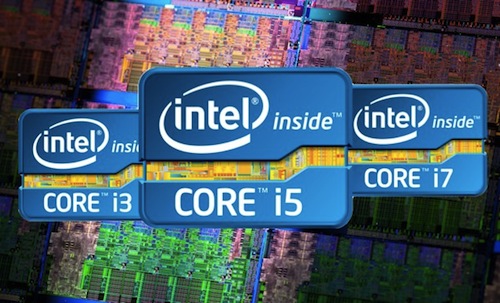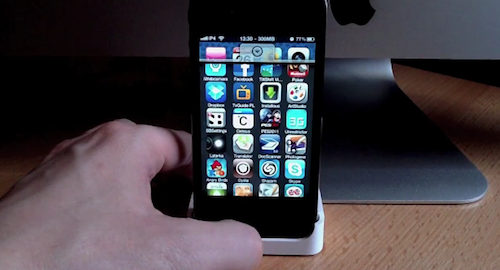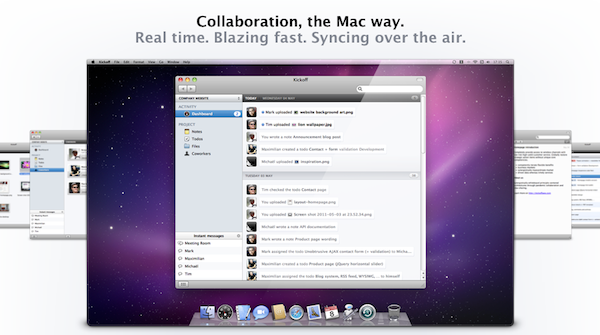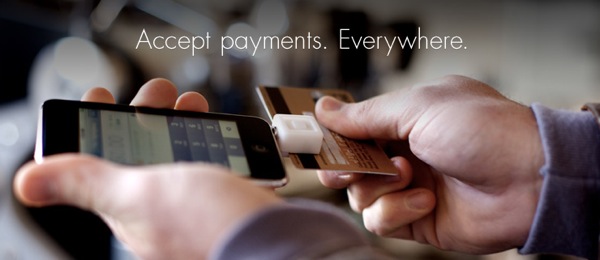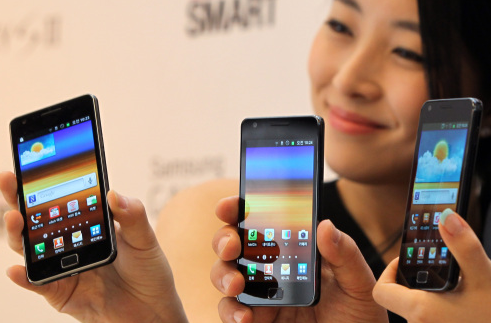Sparrow is the email client for the rest of us who want nothing more than an elegant app that requires no setup, looks good, and works seamlessly with Gmail out of the box. There is no concept of mapping folders to your Inbox or setting up an archive heap: Sparrow simply works with your IMAP or POP3 accounts with little needed configuration. As you may have previously read, Sparrow recently updated to include a universal inbox so you can see all of your activity in one place, and Facebook fans will be happy with the additional ability to add people as Facebook friends and pull down profile pics. Toss in Gravatar and Address Book support, and Sparrow aims to keep you connected its venture towards social integration. A lite version of Sparrow is free in the App Store, and the full version can be found for $9.99. Today, AppSumo is offering a 40% discount off Sparrow so you can pick it up for just $6, and we’re teaming up with the sales gurus to make the deal even sweeter. We’re giving away ten copies to our email churning MacStorians, and you can find all of the necessary rules past the break.
Get Social with the Sparrow 1.2 Giveaway!
Intel Could Make non-Intel Chips for Others
At an investor event in London earlier today, Intel CFO Stacy Smith said the company would be open to make chips based on external intellectual properties and cores, Reuters reports. Using Intel’s chip manufacturing process, widely regarded as superior to most competitors in the silicon-making space, producing chips for other companies would be a “fantastic business” for Intel, Smith said, though it would trigger an “in-depth discussion” within the company.
If Apple or Sony came to us and said ‘I want to do a product that involves your IA (Intel architecture) core and put some of my IP around it’, I wouldn’t blink. That would be fantastic business for us.
Then you get into the middle ground of ‘I don’t want it to be a IA core, I want it to be my own custom designed core,’ and then you are only getting the manufacturing margin, (and) that would be a much more in-depth discussion and analysis.
Intel’s Sandy Bridge processors are currently used in Apple’s MacBook Pros and iMacs, with the popular MacBook Air line rumored to get an upgrade to the same CPU architecture in June or July. Intel, however, does not make chips for mobile devices like the iPhone or iPad, a growing market where Intel has been left behind, putting British company ARM in a leading position as the only chip maker for iOS devices and upcoming tablets that will hit the market later this year. In the past months, due to the popularity of ARM’s architecture, it was rumored Apple could consider switching from Intel to ARM on the desktop as well; on the other hand, Intel announced its intention to develop chips for always-on, always-connected mobile devices with Silvermont and Airmont processors said to be included in future Android and MeeGo devices. As for Apple, it is unlikely that the company will switch architectures on its iOS and OS X platforms in the immediate future, though Smith’s statements could open to some interesting possibilities when it comes to Apple-designed cores combined with Intel’s manufacturing power.
Apple Patents LCD Screen That Plays Nice with Sunglasses
A new patent application surfaced at the U.S. Patent and Trademark Office entitled “Display that Emits Circularly-Polarized Light” and discovered by AppleInsider today points at a new kind of LCD screens capable of playing nice in outdoor viewing when an iPhone or iPad user is wearing sunglasses to protect himself from harmful UV rays. The problem with polarized sunglasses – not necessarily LCD screens exposed to directly sunlight, something Apple’s own displays have long been criticized due to poor performances when compared to the Amazon Kindle – is that they “only allow through light with an electric field that vibrates in the vertical direction”, and considering current LCD displays have an electric field that vibrates in one direction, the user wearing polarized sunglasses may see distorted images when looking at the screen from certain angles. Polarized sunglasses and LCDs don’t play nice together, and Apple’s proposed solution is aimed at building an LCD display that, with circularly polarized light, allows sunglasses to not see black areas, distorted images, and so forth.
The layer receives the linearly-polarized light on one surface, converts the linearly-polarized light to circularly-polarized light, and then emits the circularly-polarized light from another surface,” the application reads. “By emitting circularly-polarized light, the display reduces the perceived distortion found at some angles when the display is viewed through a linearly-polarizing filter.
The patent design seems to suggest Apple might get around the problem of iOS devices used outdoors assuming people generally tend to wear sunglasses in direct sunlight. The patent credits John Z. Zhong, Wei Chen, Cheng Chen, Victor H.E. Yin, and Shawn R. Gettemy as inventors.
Apple Files Lawsuit Against Kid Who Sold White iPhone 4 Parts
A few months ago we covered the story of Fei Lam, whose site, WhiteiPhone4Now.com had been forced to shut down. He managed to sell $130,000 worth of iPhone 4 parts that were in the elusive (at the time) white color. The story since then went quiet, until yesterday when Apple decided to file a lawsuit against Lam and his parents.
The suit claims that the site led to the infringement and dilution of Apple’s trademarks and that it was involved in deceptive practices through selling the iPhone conversion kits. Curiously, Apple has also filed a voluntary dismissal of the lawsuit, which as MacRumors suggests, may mean that a settlement has been reached, although the request for dismissal without prejudice may mean that Apple could come after Lim again at a later date.
Defendent Lam willfully and without authorization has used Apple’s trademarks in connection with the sale of his “White iPhone 4 Conversion Kits,” which among other things included white front and back panels with Apple’s logo and “iPhone” trademarks that are used in connection with the promotion and sale of Apple’s well known iPhone 4 handheld mobile digital electronic devices.
Included in the suit from Apple are quotes from an instant messaging conversation between Lam and Alan Yang, a business owner in Shenzen who obtained the parts for Lam. Of importance is that Yang notes he was having difficulties getting parts shipped out because customs agents in Hong Kong were raising concerns over trademark issues.
Apple has requested a permanent injunction barring the Lam, and his parents who are also included in the suit because he is a minor, from any further sales and forfeiture of all profits from the sale of white iPhone 4 parts, reimbursement for legal expenses and additional financial penalties. If you are interested in more details of the case, check out PatentlyApple which has done an extended summation of the suit.
[Via MacRumors]
Get Android’s App Launcher on Your iPhone via Jailbreak
One thing I’ve always liked about the Android operating system, native Cloud Player and Music Beta apps aside, is the possibility to list all your apps and some favorite ones in the app launcher, a vertical window overlaying the “home screen” that can be opened at any time without having to move between pages. iOS allows you to organize apps in different screens and folders, the multitasking tray gives you access to recently used and paused apps, but I’d like to see a way to quickly get ahold of apps that I use a lot, are not on the first home screen, and aren’t suitable for a folder. Similarly, it’d be nice to have a way to see more apps in a single screen, avoiding being forced to constantly switch between pages. Those who decided to jailbreak their 4.3.3 iPhones might find a good solution in AndroidLoader, a $2.99 tweak from ModMyi’s repository that activates and Android-like app launcher window listing all the apps installed on your device. The launcher can display apps in alphabetical order, it can be scrolled vertically and all you have to do to open it is tap on a small icon placed in the middle of the standard iOS dock. The interface looks rather simple and the tweak is said to be very lightweight with minimal memory footprint.
Check out the demo video after the break. AndroidLoader is available now in the Cydia Store at $2.99. [via iSpazio]
Read more
Kickoff For Mac Aims To Simplify Teamwork
Working and communicating effectively in a group for a project can be quite painful and difficult, but Kickoff is a new group collaboration tool that aims to make it much easier for Mac users.
Designed for small teams of people, Kickoff gives users three integral features required for effective teamwork – chat, file management and to-do’s/notes. What makes Kickoff look really interesting is that each of these core functionalities are fully featured and thought through. For example it doesn’t just store files, because it also has built-in versioning and transfers within chat, whilst to-do’s can be allocated to certain people and a dashboard provides an overall glance at everything in the project.
It syncs everything over the air in real-time and because it’s a Mac app you can easily drag files, use Quick Look on files and receive dock notifications. Unfortunately pricing will probably be a bit prohibitive for many, starting at 20€ a month for up to three users, whilst for up to 15 users it is 50€ per month, although there is a two week free trial. Jump the break for some more screenshots.
Merriam-Webster Dictionary Hits The iPad
The comprehensive and appreciated Merriam-Webster dictionary is now available in an official iPad optimized app for free. The iPad app, built upon their iPhone app, has been redesigned to take advantage of the iPad’s screen and brings a few new features.
The main new feature is a scrolling index which, when the iPad is orientated in landscape, appears on the left of the screen, and lets you scroll the entire dictionary in alphabetical order. It is largely pointless, but pretty cool – did you know the word turmeric is the immediate word before turmoil in the dictionary?
Just like the iPhone app it has voice search powered by Nuance, synonyms and antonym support, audio pronunciations, example history and pretty much everything else that a dictionary app needs. The app does have banner ads at the bottom of the screen, but they are fairly unobtrusive and considering you get an entire dictionary for free, it is well worth it.
A Lunch At Apple Changed Square’s Name and Design→
A Lunch At Apple Changed Square’s Name and Design
The name Squirrel was known even before Square’s official announcement in December of 2009. As was the fact that the dongle was acorn shaped. The information that a lunch at Apple changed the design of the Square dongle so drastically and was the reason behind the name change is new, as far as I can tell.
I can just imagine that lunch in the Apple cafeteria with Steve Jobs telling Dorsey to drop the woodsy Acorn look and go with something white, minimal and squared off. Hey, it worked for Apple right?
The Next Web reports Jack Dorsey, Twitter co-founder and Square CEO, gave out interesting tidbits on the origins of Square when accepting the 21st Century Visionary award in San Francisco last night. In particular, Square was originally called Squirrel and the reader was wooden and acorn shaped. That was, until a lunch at Apple, quite possibly with Scott Forstall, magically changed the design to a squared off white reader named Square.
Furthermore, it really seems like Apple is a major source of inspiration for Square. From the design of the card reader and the website, to the skeuomorphic attention to detail in the new Card Case app and the whole style of Jack Dorsey’s presentation earlier this week, the simplicity and elegance of Square are certainly well-suited for Apple’s retail stores.
New Rumor Claims Apple Is Considering AMOLED For iPad 3
According to a report by The Korea Herald, in a recent visit to South Korea Apple COO (and temporary CEO) Tim Cook has discussed with Samsung the possibility of implementing AMOLED displays in the next-generation iPad, dubbed iPad 3. The “industry sources” cited by The Korea Herald claim that Apple would be interested in the technology for an “upgraded version” of the iPad 2, with the website also relaying an old rumor that suggested Apple could release another iPad model later this year.
Apple wants to tap into Samsung’s AMOLED technology for an upgraded version of the iPad 2, considered as many by the iPad 3 that is likely to be launched toward the end of this year,” a source told The Korea Herald on Wednesday on condition of anonymity.
Tim Cook is not only the COO, but also acting CEO of Apple. During Cook’s trip last week, Apple seems to have offered Samsung an advance for the AMOLED displays, the source said.
Apple’s rumor timeline in regards to AMOLED displays produced by Samsung goes a long way back to 2009: various reports from last year indicated the company had considered AMOLED screens for the iPhone 3GS, but couldn’t implement them due to production capacity issues, high costs and the PenTile technology used by Samsung at the time. Also last year, when Apple was rumored to be working on a new iPad, speculation surrounding the supply chain in Asia claimed Apple was negotiating with Samsung over the usage of AMOLED displays, which didn’t happen as the company preferred standard LCDs with IPS technology produced by LG, among others. Manufacturing issues with LG displays that allegedly caused problems with iPad 2 shipments in the last quarter might lead the company to choose another supplier for the next-generation iPad, though The Korea Herald is also claiming Apple is considering a major shift in the technology being used and an early launch later this year.
Samsung’s AMOLED technology is said to have dramatically improved over the past months to be suitable for tablets, sport brighter colors and deeper blacks, better behavior in direct sunlight and low power consumption. Samsung is currently using AMOLED in its Galaxy S smartphones, and it’s also rumored to use the displays in future tablets running Android. Samsung is currently facing a lawsuit from Apple, whose claims of patent infringement for the design of the iPhone and iOS copied by Samsung’s Galaxy devices and TouchWiz UI have led the tech press to believe future collaborations between the two companies may not go as smoothly as before. [The Korea Herald via 9to5mac]



